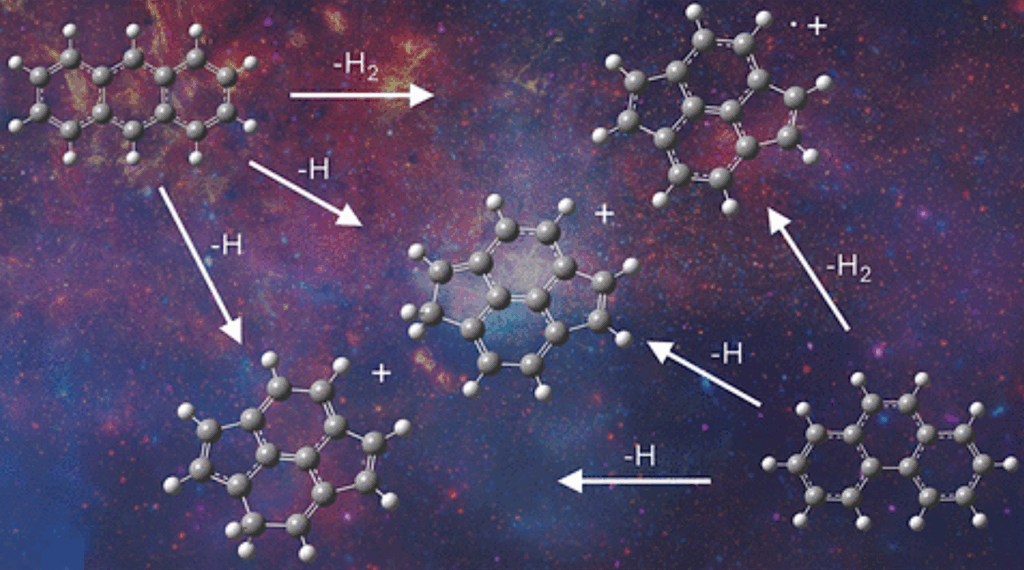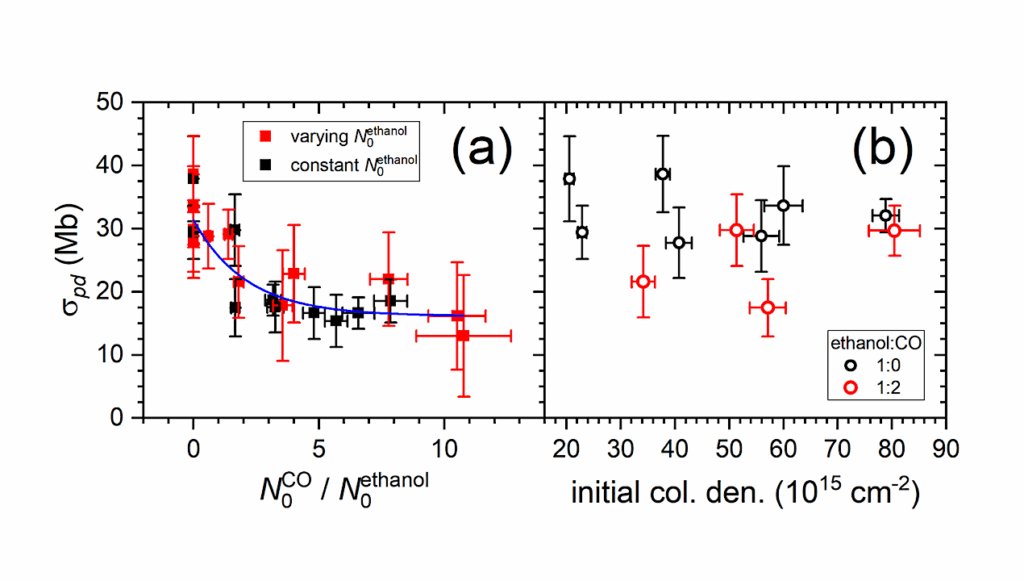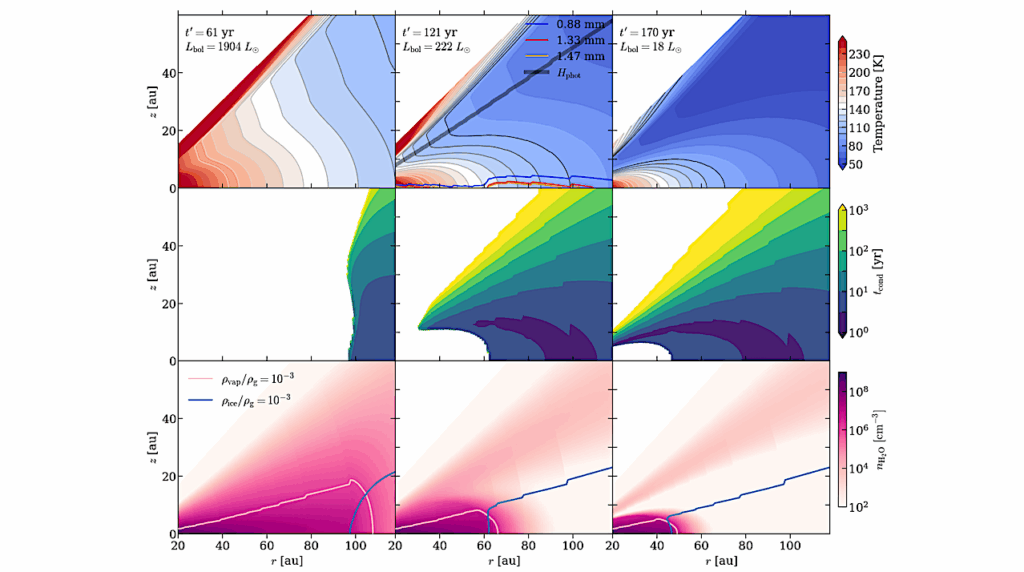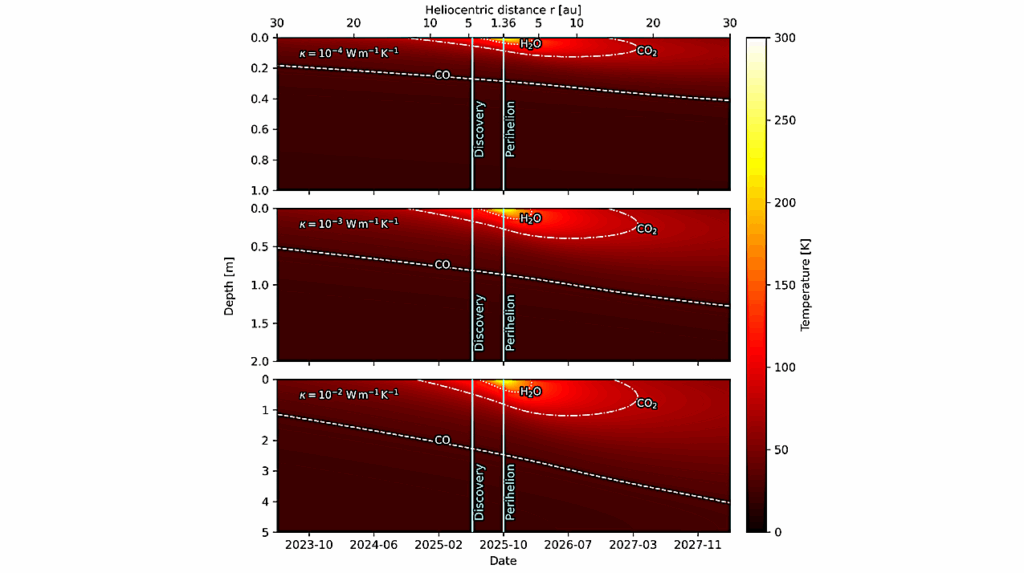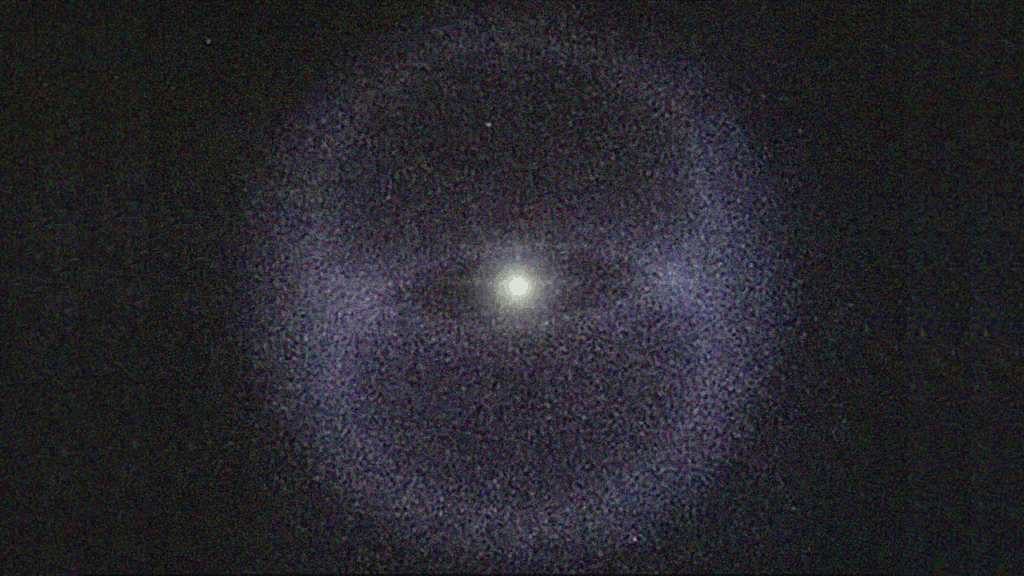Hot, Dense Water Vapor Found In A Protoplanetary Disk
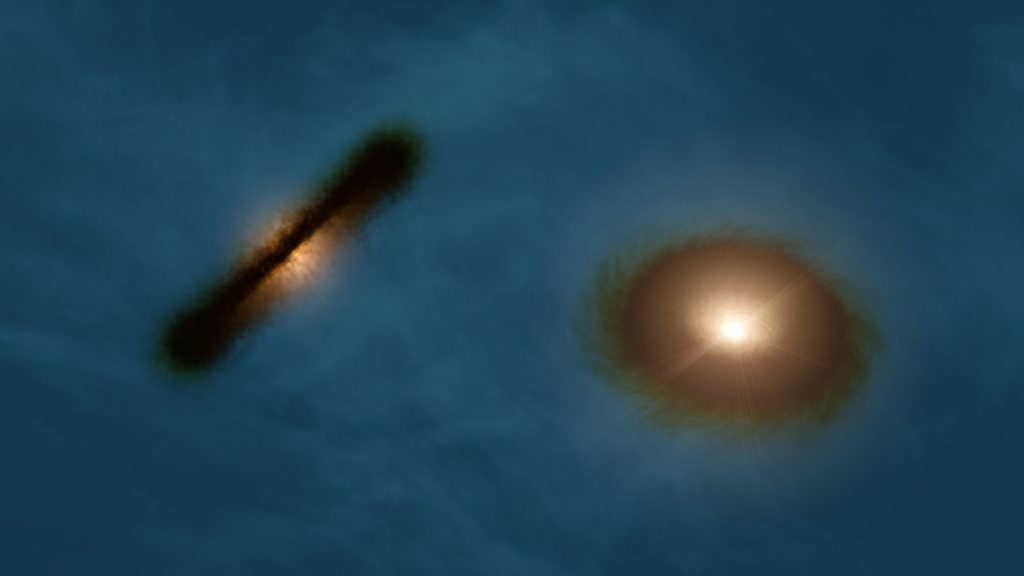
Recent observations of the protoplanetary disks hosted by a pair of young stars suggest the presence of hot, turbulent water vapor. Though many possibilities exist, researchers propose that a compact disk around a young planet could be the source of this rare spectral signature.
Protoplanetary disks are the sites of planet formation, and studies of these disks hold the key to understanding the origins of the planets in our solar system and beyond. However, protoplanetary disks are complex, and teasing out the promised planetary origins relies on understanding the interconnected facets of disk chemistry, structure, and kinematics.
To make matters more complicated, throw another star into the mix: by studying the disks around young binary stars, which are expected to form at the same time from the same material, researchers can probe other aspects of disk development. For example, it’s not yet known whether disk evolution is deterministic (meaning that two disks with the same initial properties will evolve in the same way) or random (meaning that the evolution of identical disks will diverge). In a recent research article, astronomers set out to study dual disk development in a binary system — and found something unusual along the way.
Infrared Investigation
Colette Salyk (Vassar College) and collaborators analyzed high-resolution infrared spectra of the two disks in VV Corona Australis (VV CrA), a two-million-year-old binary system containing stars roughly half the Sun’s mass. The disk around one of the stars, VV CrA A, showed an unusually large number of emission lines due to the presence of water vapor — and only one other protoplanetary disk is known to show water emission lines at such long wavelengths.
The second disk in the binary system, VV CrA B, has some of the same spectral features, but emission from water vapor was detected only weakly. This doesn’t necessarily mean that the disk lacks water; instead, water vapor might be present at a lower temperature or density.
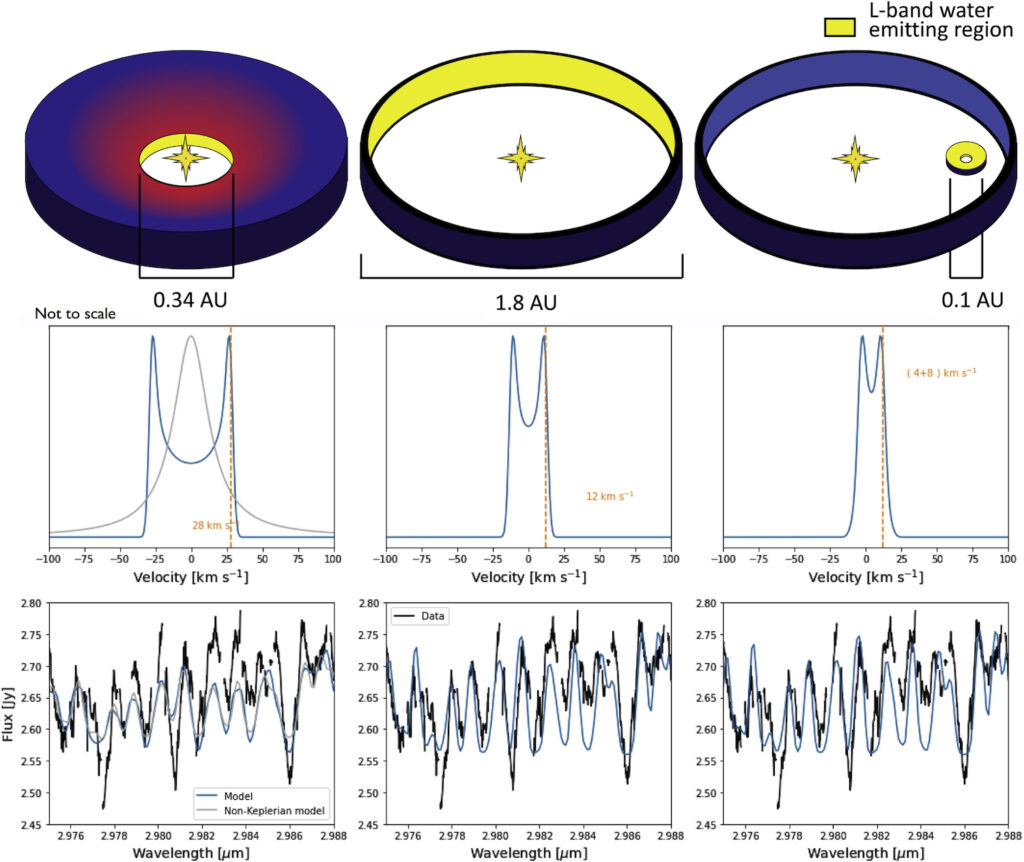
Diagrams of the emitting geometry for VV CrA A’s disk and the modeled emission for each scenario. Click to enlarge. [Salyk et al. 2022]
Salyk and collaborators modeled VV CrA A’s spectrum and found that the emission likely arises from water vapor that is hot (1500K), dense, turbulent, and spans an area of just 0.003 au2. Intriguingly, further modeling showed that the emission could arise from a water-rich ring circling the central star or a compact ring surrounding a planet in the process of formation — a circumplanetary disk. Detections of circumplanetary disks are rare and often tentative, so being able to identify them via their water emission would be exciting. However, the only stellar systems in which this water feature has been identified are young, which could mean that the presence of hot water vapor is instead tied to a process at work in young disks, like accretion or disk winds.
As is often the case in the study of protoplanetary disks, delving into one question prompts many others. The authors suggest several avenues for future work, including observing VV CrA at near-infrared or submillimeter wavelengths and expanding their modeling of emission from circumplanetary disks. Hopefully, further analysis will illuminate the cause of this unusual water feature!
Citation
“An Unusual Reservoir of Water Emission in the VV CrA A Protoplanetary Disk,” Colette Salyk et al 2022 AJ 164 136. doi:10.3847/1538-3881/ac8878
Astrobiology



